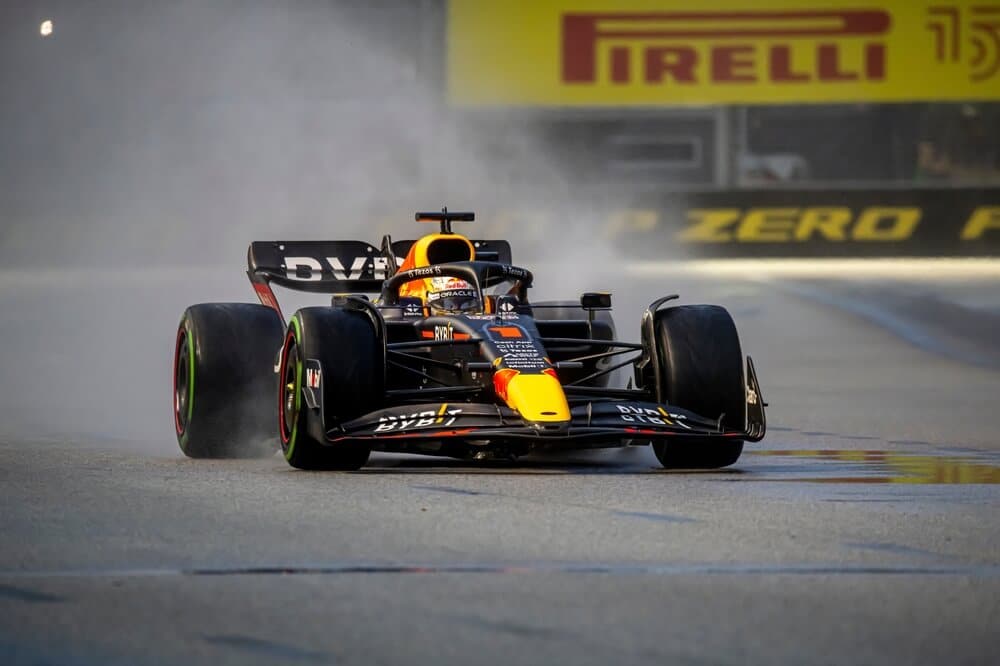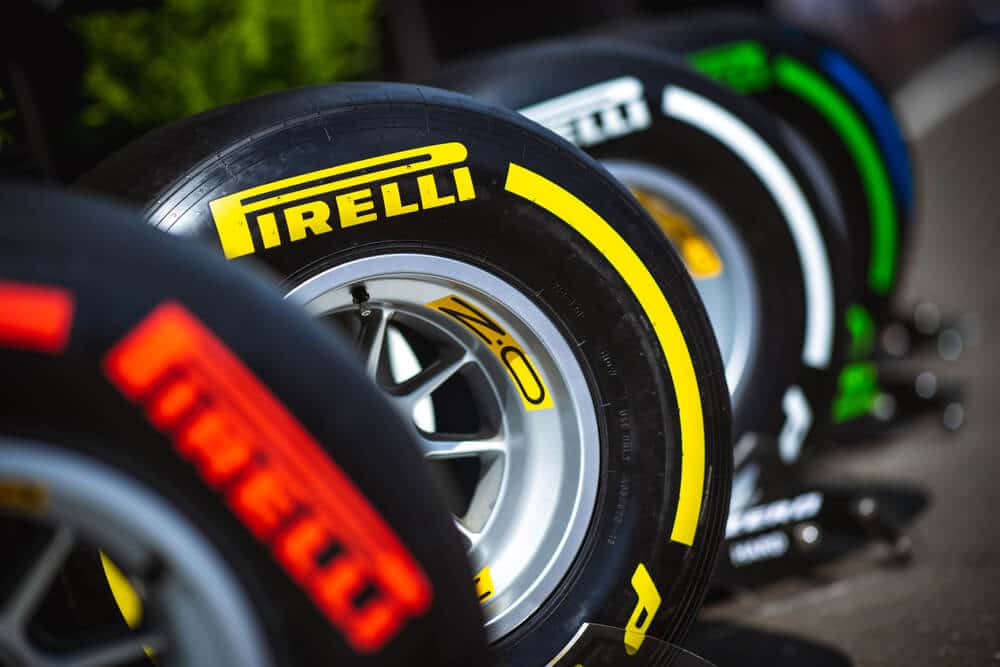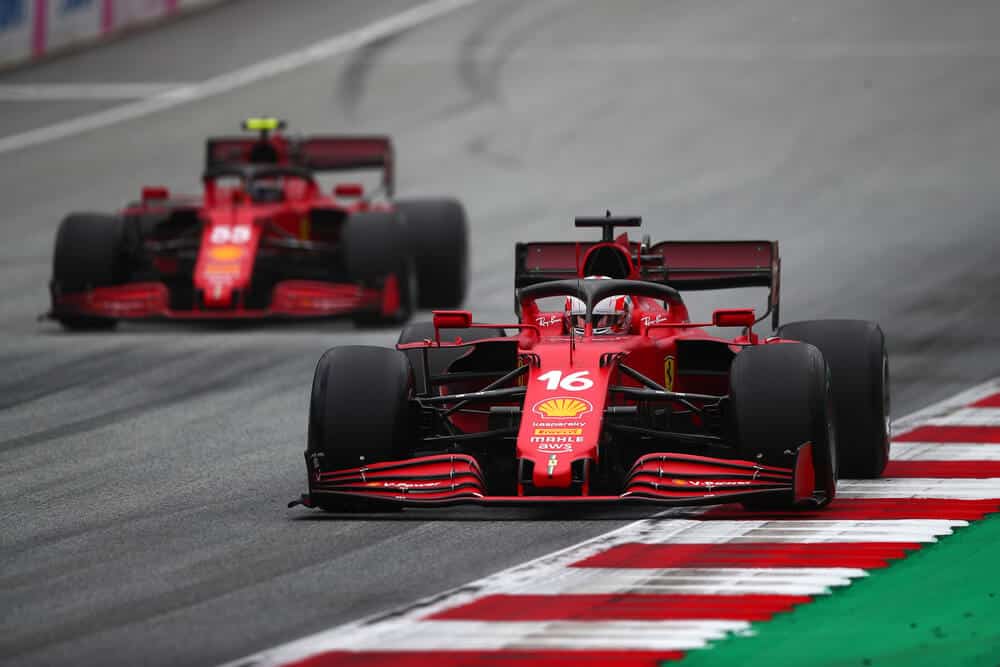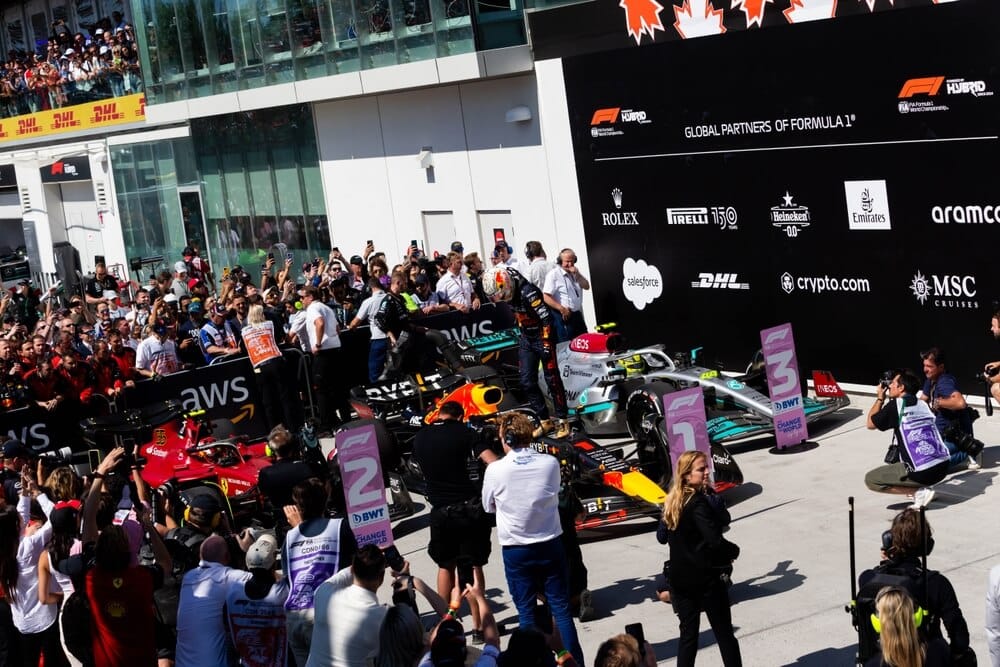Lock up in Formula One racing is a phenomenon that occurs when the wheels of a car stop rotating or lock. It happens when the brakes are applied. It is a critical moment that can have significant impacts on the performance and outcome of a race. Understanding lock up and knowing how to prevent and manage it are crucial skills for drivers and teams to master.
This article will provide a comprehensive overview of lock up in Formula One. Including its definition, the different types, its effects, and strategies for prevention and management. From understanding the technical aspects to the importance of lock up in Formula One racing, this article will provide valuable insights for fans, drivers, and teams alike.
Whether you’re a seasoned Formula One veteran or a newcomer to the sport, this article will help you to better understand this critical aspect of the sport.
Table of Contents
Watch this video to learn more about Lock Up’s in F1.
What does Lock Up mean in Formula 1?
Lock Up in Formula One refers to a sudden locking of the wheels. Usually it is the front wheels that locks up, when the driver applies the brakes. It occurs when the brakes are applied too hard. It causes the tyre to stop rotating, but the suspension keeps moving. The tyre will then end up skidding on the track.
Understanding the concept of lock up is important in Formula One as it can cause significant damage to the tyres. Maintaining good condition on the tyres have a direct impact on the performance and outcome of a race. By understanding the causes and effects of lock up, teams and drivers can better prepare and respond to the situation. Potentially improving their performance and results.
Key takeaways
- Lock up in Formula One racing refers to a situation in which the wheels of a car stop rotating or lock when the brakes are applied.
- There are two types of lock up in Formula One racing: single and double.
- The effects of lock up can include damaged tires, decreased performance, increased lap times, increased wear and tear, and disqualification.
- Lock up can be caused by driver error, mechanical issues, or tire problems.
- Teams and drivers can prevent and manage lock up by using the right brake balance, adjusting tire pressure, and practicing techniques to avoid lock up during braking.
- Monitoring the car and track conditions, as well as implementing strategies to manage lock up effectively, are also important steps for teams and drivers.
- Understanding and managing lock up are crucial skills for drivers and teams to master. It can help to reduce the risk of crashes and increase the chances of success in Formula One racing.
Types of Lock Up
There are two main types of lock up in Formula One: single lock up and double lock up.
Single Lock Up
Single lock up refers to a situation in which only one wheel of the car locks or stops rotating when the brakes are applied. This is a less severe form of lock up and is often easier to recover from than double lock up. Single lock up occurs when the driver applies the brakes too hard on one wheel, causing it to lock and skid on the track.
The other wheel remains functional, allowing the driver to maintain some level of control over the car. In single lock up situations, the driver may be able to release the brakes and regain control of the wheel. That will reduce the impact of the lock up on their performance and outcome of the race. It’s important for drivers to be aware of single lock up and know how to respond effectively to minimize its impact.
Double Lock Up
Double lock up refers to a situation in which both wheels of the car lock or stop rotating when the brakes are applied. This is a more severe form of lock up compared to single lock up and can be more difficult to recover from. Double lock up occurs when the driver applies the brakes too hard on both wheels. It will cause both wheels to lock and skid on the track. This results in a significant loss of traction and control, making it difficult for the driver to steer the car. In double lock up situations, the driver may lose control of the car and have difficulty slowing down or stopping. It’s crucial for drivers to be aware of double lock up and know how to respond effectively to minimize its impact. It’s also important for teams to work on developing strategies to prevent double lock up, such as adjusting brake balance or improving the braking system.
Effects of Lock Up
Lock up in Formula One can have significant effects on the performance and outcome of a race. Some of the most common effects of lock up include:
- Damage to the Tyres: Lock up can cause damage to the tyres, such as cuts or punctures, which can result in a loss of air pressure or a blowout.
- Decreased Performance: Lock up can lead to a loss of traction and control, reducing the speed and performance of the car.
- Increased Lap Times: Lock up can result in increased lap times, as the driver loses time due to reduced speed and the need to regain control of the car.
- Increased Wear and Tear: Lock up can increase wear and tear on the braking system, leading to a higher risk of failure and potential safety hazards.
- Disqualification: In extreme cases, lock up can result in a disqualification if the car goes off track or causes damage to the circuit.

How Teams and Drivers Respond to Lock Up
Strategies to Prevent Lock Up
Teams and drivers can take a number of steps to prevent lock up from occurring, including:
- Adjusting Brake Balance: Teams can adjust the brake balance to distribute the braking force more evenly between the front and rear wheels.
- Improving Brake System: Teams can work on improving the brake system, such as upgrading the brake pads, discs, or calipers. It is to provide more consistent and reliable braking performance.
- Tyre Management: Teams can implement tyre management strategies, such as adjusting the tyre pressure or camber, to improve traction.
- Driver Training: Teams can provide driver training to help drivers understand the causes and effects of lock up. It’s a strategic move to develop the skills to respond effectively on lock ups.
Strategies to Manage Lock Up
In the event of a lock up, drivers and teams can use the following strategies to manage the situation:
- Releasing Brakes: Drivers can release the brakes to regain control of the wheel and reduce the risk of further damage.
- Correct Steering: Drivers can use correct steering techniques to steer the car back onto the track and maintain control.
- Slow Down: Drivers can gradually slow down to regain control of the car and reduce the risk of a crash.
- Pit Stop: In some cases, teams may opt for a pit stop to replace damaged tyres and repair any other damage caused by the lock up.
Frequently asked questions about Lock Up
What is lock up in Formula One racing?
What are the effects of lock up in Formula One racing?
How can teams and drivers prevent and manage lock up in Formula One racing?
Conclusion
Lock up refers to a situation in which the wheels of a Formula One car lock or stop rotating when the brakes are applied. There are two types of lock up, single and double, with double lock up being the more severe form. The effects of lock up can include damage to the tyres, decreased performance, increased lap times, increased wear and tear, and disqualification. Teams and drivers can implement strategies to prevent lock up and manage it effectively.
Article sources
Learn more about Formula One
Want to learn more about F1? Then visit our Formula 1 glossary and dictionary.



